Fertilizers for violets: what are they and how to use them?
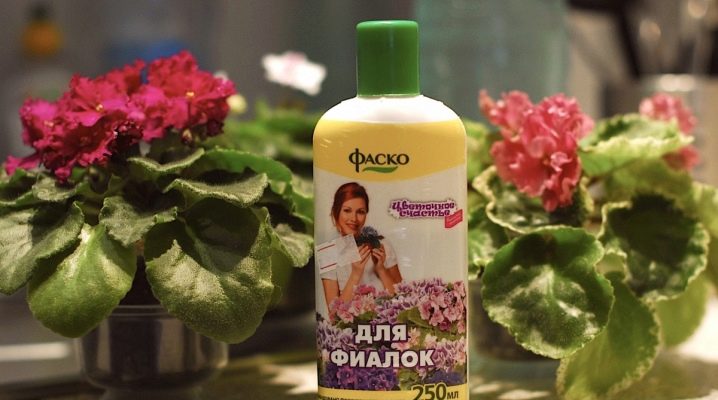
Saintpaulia is a genus of flowering herbaceous plants. The people related to the Saintpaulia cultures are sometimes called the Usambar violets. In fact, violet and saintpaulia are two fundamentally different plants. The article will focus on Saintpaulia, but for simplicity and convenience of the reader, we will further call it a violet.
However, both crops need fertilizers, so information on fertilizing will come in handy when growing any specimen.
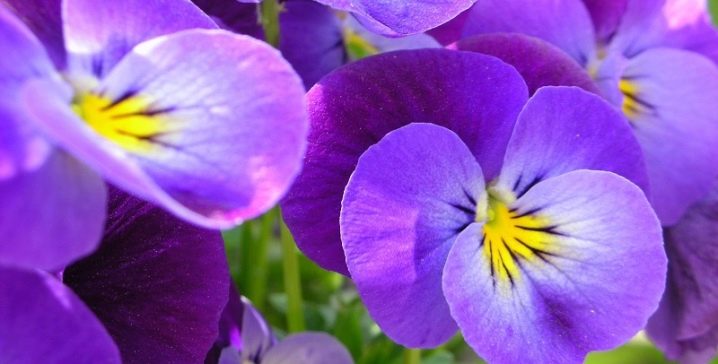
Functions
It is impossible to grow a healthy, full-fledged lush plant without additional additives. It should be correctly balanced fertilizers. Usually, the first top dressing is applied a month after transplanting. When the active period begins (from early spring to late autumn), the optimal fertilization frequency is 2-3 weeks. In winter, when the rest period comes, one serving per month is enough for the violet.
An element such as nitrogen is of particular importance for growing Saintpaulia. The plant needs it in the spring. Its function is to improve the condition of the leaves.
In order for the violet to bloom profusely and luxuriantly, it is recommended to use phosphorus-potassium compounds. At the stage of setting the buds, you need to slightly increase the acidity of the soil, so the flowers will acquire a brighter color.
In addition to the main trace elements, the violet needs to be fertilized with other substances. So, sulfur and magnesium promote the accumulation of chlorophyll in tissues, and calcium ensures the stability and health of the root system. Iron essential for the development of enzymes whose functions include the formation of chlorophyll.
To protect a flower from fungal diseases, it needs to be fed. mixture with copper content. Molybdenum contributes to the fact that Saintpaulia fully assimilates nitrogen. Zinc is needed for active growth, and boron is responsible for the supply of oxygen to the roots.
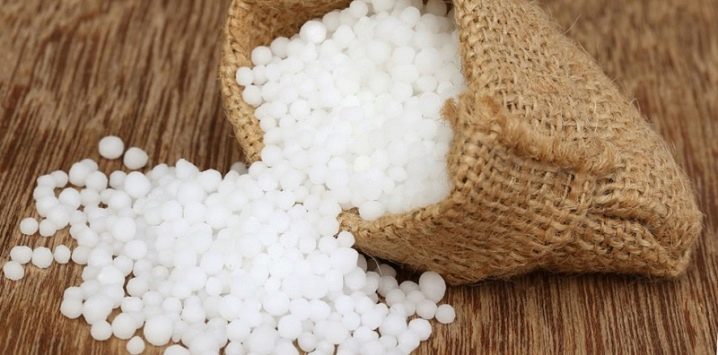
Varieties
In general, fertilizers for Saintpaulias can be divided into superphosphates, mineral additives and organics. Superphosphates are mixtures for acidifying the earth and activating flowering. The composition of mineral fertilizers contains all the main substances that are required for full development and flowering. Organics are products based on humic acids made from natural raw materials. Among all the varieties, special and folk remedies can be distinguished.
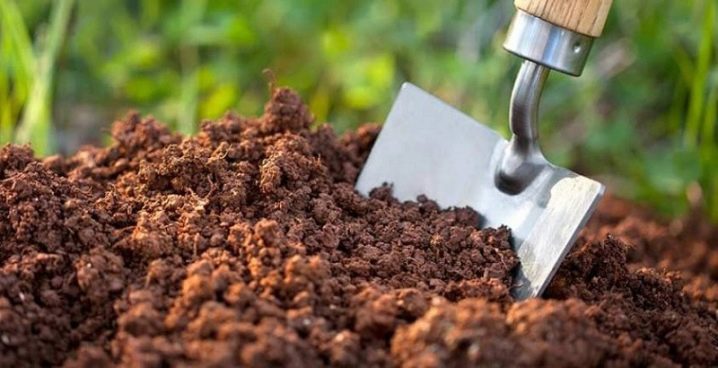
Special
Most florists still trust the purchased mixtures. In ready-made formulations, all substances are pre-balanced, the fertilizer does not need to be prepared, insisted, crushed, as is the case with folk recipes. The most common are the following.
- Peters Professional. This preparation is necessary for root and foliar feeding. It promotes full rooting, high-quality budding, can be used with hard water and calcium deficiency. This fertilizer is especially often used by flower growers in winter.
- Etisso. Contains nitrogen, potassium, phosphorus, vitamin B1, trace elements. It is used for healthy budding. A suitable option for improving flowering.
- Fasco. A versatile blend. Promotes the overall beautiful appearance of the plant, improves the color of the leaves, provides abundant and long-lasting flowering.
- Epin Extra. Maintains the balance of nutrients, resists stress, and therefore is often used during frosts, when accidentally flooding a flower, when attacking insects and during other stressful situations for the plant. Also suitable for processing violets that are planned to be transplanted.
- "Topaz"... This agent is a fungicide, but it can also be used to improve the condition of the plant. Under the influence of fungi, the leaves fade, the flower withers and gradually dies. To avoid this, for prophylactic purposes, it is recommended to carry out treatment with a protective composition "Topaz".
- Cyoctine paste. It is used as a stimulant for reproduction, the formation of children and lush flowering. When applied, the plant is lightly scratched at the bottom of the stem with a needle disinfected with alcohol. Further, the resulting wounds are treated with cyoctin paste. There should be a lot of babies in a couple of weeks. Then they are planted and new specimens are grown.
- "Osmokot"... An efficient nitrogen source. It is a fertilizer with prolonged action. Promotes the full assimilation of nutrients throughout the season. All nutrients are distributed evenly.
- Schultz. It has a high phosphorus content, it also contains nitrogen, potassium, a set of trace elements. It is used so that Saintpaulia blooms well and for a long time, the buds develop fully, the petals have a bright saturated color. The advantage of feeding is the easy digestibility of the plant, as well as the fact that the fertilizer does not burn the leaves and roots even under the sun. The disadvantage of the funds is low availability, it can not be found in all flower shops.
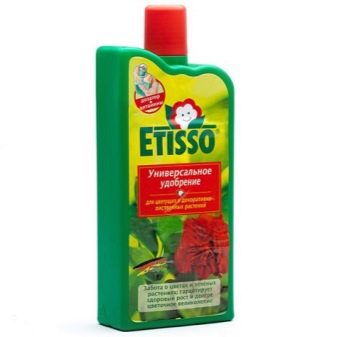
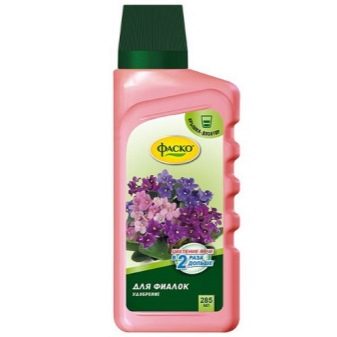
Folk remedies
Some growers believe that it is better to use folk recipes, and not feed the plant with chemistry. But commercially available formulas are more effective, although home remedies can sometimes be a good supplement.
- Black tea. This fertilizer is applied during transplantation. The fact is that when replanting violets, soil moisture is of great importance. So that the soil does not dry out, it is recommended to mix the tea leaves with the soil in proportions of 1: 3. Thus, the soil will be looser and lighter, respectively, moisture will flow to the roots more fully. Only classic black tea is suitable for fertilization, green and fruit varieties cannot be used.
- Coffee grounds. Essentially used for the same purposes as tea leaves, it also gives the earth a loose texture. However, coffee can also be used for watering Saintpaulia, but it is important to know that after watering the thick one, the plant cannot be irrigated with plain water for some time.
- Yeast. Used to boost the immune system and strengthen the roots. Recipe: combine dry yeast (5 g) and sugar (40 g), dissolve the mixture in water (5 l), put in a warm place for 3-4 hours, dilute in water 1: 5 and water the saintpaulia with the resulting liquid for a year. In summer, watering frequency is 3 times a month, in winter - once a month.
- Sugar. Recommended for fertilizing once a month. When feeding, sugar (50 g) is dissolved in water (1 l) and a violet is fertilized with the resulting solution. In this case, the mixture cannot be left for storage, one portion should be used once.
- Vitamin B12. Helps to strengthen the immune system. One of the most common "remedies" for treating stress in Saintpaulia. It is used for exhaustion after flowering, when transplanting or replacing to a new place. The ampoule is diluted in water in proportions of 1: 10. You cannot use this folk fertilizer more than three times a year.
- Citrus. Peels of oranges, grapefruit, tangerines are used for feeding. The main purpose is to protect against insects, which, in turn, helps to strengthen the immune system. To prepare a protective composition, the peel must be poured with boiling water and left for a day, filtered, diluted in water in a ratio of 1: 10.
- Onion peel. The main function of the onion solution is to protect against diseases and insects.The husk is boiled, cooled, filtered and treated with the resulting mixture of Saintpaulia. Good for preventing stress, suitable for use when rearranging a flower, for a lush bloom, in the spring before the start of the active flowering phase.
- Iodine. A very important substance for the healthy growth of the violet. It is recommended to dilute a drop of iodine with three liters of water. Do not use a highly concentrated solution, as in large quantities it can injure the root system. It is not allowed to use more than 3 times per season.
- Hydrogen peroxide. This item has several functions. It improves immunity, provides protection against ailments and insects, and has a positive effect on flowering. However, when using peroxide, there is also a danger: an excessive amount of the product can have a negative effect on the violet, so it is important to be careful when preparing the fertilizer. Dissolve hydrogen peroxide (2 tablespoons) in pure distilled or settled water (1 liter), and water the plant with the resulting solution. It is recommended to feed the flower on wet soil in the morning or evening. It is enough to fertilize Saintpaulia with peroxide a couple of times a month.
- Ash. This element is rich in potassium and phosphorus, therefore it is also used for abundant flowering. Dissolve 1 tablespoon in a liter of water.
Ash is also used when transplanting a plant, adding it to the soil.
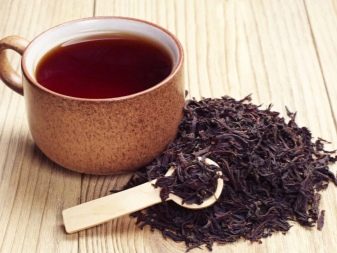
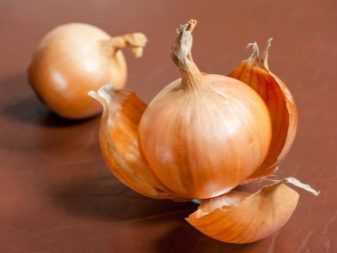
How to determine if fertilization is needed?
As soon as the plant feels that it lacks some substances, it will let you know about it. Therefore, when keeping violets, carefully monitor the condition of the flower, periodically inspect the bush itself and the soil. A violet needs feeding, the conditions of which have not changed, but it has begun to fade.
Slow growth of Saintpaulia, weak stems and leaves, gradual pallor of the leaf plate, prolonged absence of flowering, rapidly opening buds or, on the contrary, very tight flowers - all these signs indicate that the violet needs to be fed.

How to apply correctly?
It is important to know during what period of growth the flower cannot be fertilized. First of all, you should postpone top dressing when transplanting a plant into a new pot - let it get used to the new place and not waste energy on absorbing additional nutrition. In addition, the new soil is already rich in nutrients. If the temperatures favorable for the maintenance of Saintpaulia are not normal, then the flower also does not need fertilization. It is important to wait until the temperature returns to the required limits and resume feeding.
Do not fertilize the plant if it is placed in direct sunlight, as this can cause burns on the leaves. Also, feeding is not allowed in case of violet disease. During the period of illness or pest infestation, Saintpaulia should spend all its energy on combating this problem, and not on assimilating nutrients. Additional mixtures can be added only when the flower is healthy.
There are two ways of feeding - root and foliar. The root method is more effective, since all the beneficial elements are absorbed by the root system. In order for the fertilization procedure to be as complete as possible, it is recommended to adhere to the following rules.
- Do not use cold water when preparing the solution. The optimum water temperature is room temperature.
- If a store mix is introduced, then do not rush to blindly follow the instructions. It is recommended to halve the indicated proportions. There are enough nutrients for the plant and in a reduced amount, but overfeeding can lead to negative consequences.
- Apply the fertilizer very carefully so that the mixture does not get on the leaves or rosettes.
- If there are a lot of plants, then you can put all the specimens in a common tray filled with fertilizer diluted in water for half an hour.
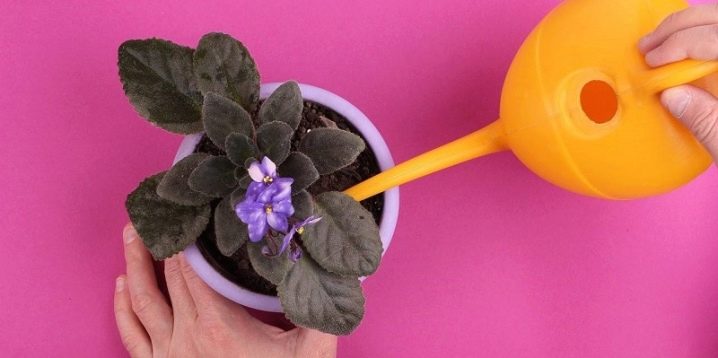
When saintpaulia is foliar fed, these recommendations should be heeded.
- Before spraying the plant, gently dust off the leaves.
- Treat only in the morning or evening. During the daytime, the sun is too hot, so a wet leaf can get burned.
- Spray on the inside of the sheet.
- As with the root method, halve the proportions indicated in the instructions.
- Do not feed the plant at low air temperatures. This can lead to rotting of the aboveground part of the violet.
The technology of preparation of nutritious feedings also differs. For example, store products differ in shape.
- Sticks. In this case, fertilizers are simply stuck into the soil near the plant. Usually the whole bacillus is saturated with nitrogen, phosphorus, potassium and other nutrients. The number of sticks stuck in depends on the diameter of the container. The rules for determining their quantity are described on the packaging.
- Granules and powders. In this case, the drug is dissolved in water. In terms of quality, this form is not worse than sticks, and it also has a very affordable price, however, difficulties in storing products are possible.
- Liquid fertilizers... The required portion is added to the water using a cap, after which a violet is poured with the resulting solution. The most common feeding method.
But no matter how the violet needs additional nutrition, an excess of dressings bears even more damage than a lack of them. If the plant does not bloom, but is regularly fertilized, then perhaps the reason for this behavior is precisely the excessive amount of nutrients. That is, too saturated soil forces the flower to give all new leaves, to form stepchildren, which take away forces from the parent outlet. Such a violet loses its immunity, cannot resist diseases and fungi.
Only a moderate amount of additional nutrition can ensure the full development of a flower.
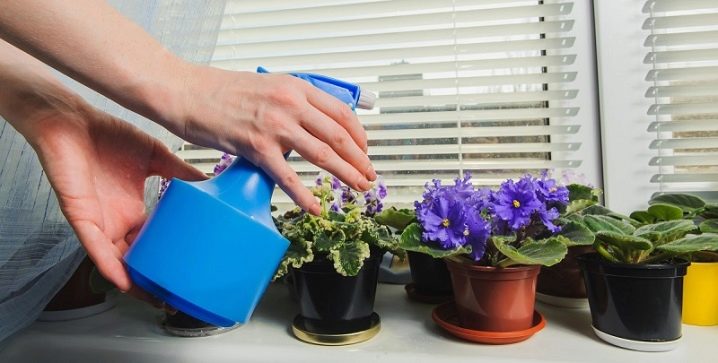































The comment was sent successfully.